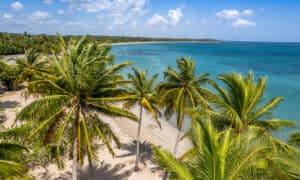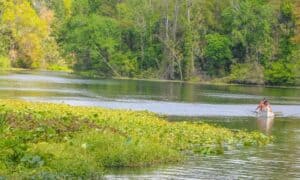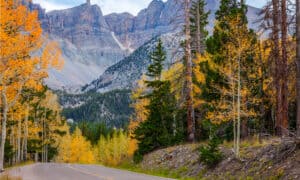Once you retire, the world truly is yours to explore. So, where should you adventure to first in your golden years? This article will investigate 4 national parks that are not only exceptionally beautiful but are also accessible to an older crowd. Here are the best 4 national parks for seniors to visit.
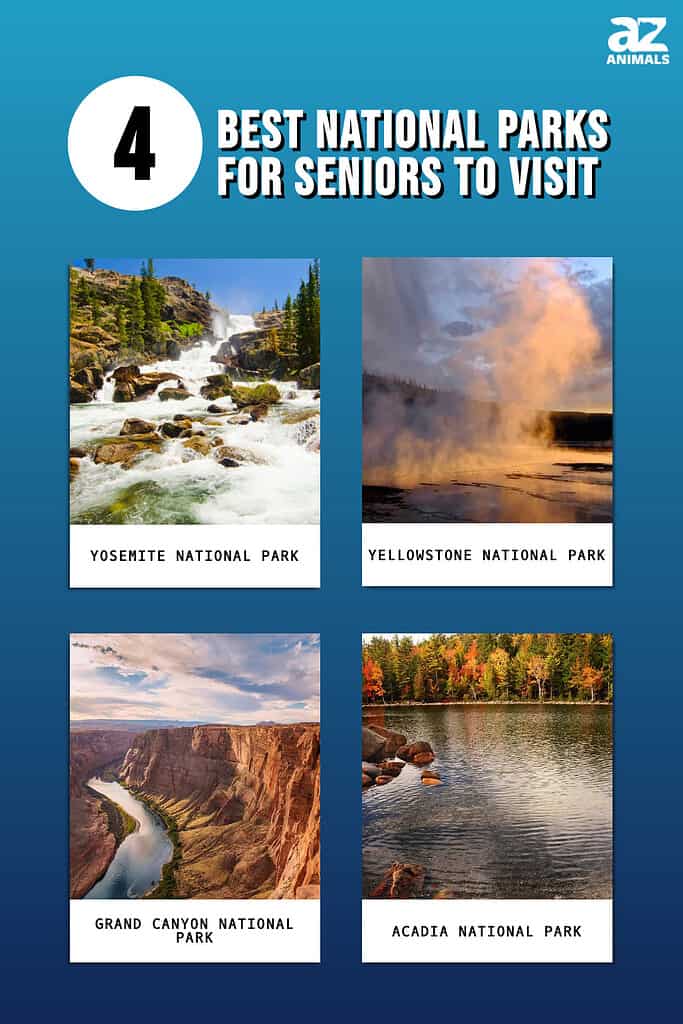
Background
United States National Parks
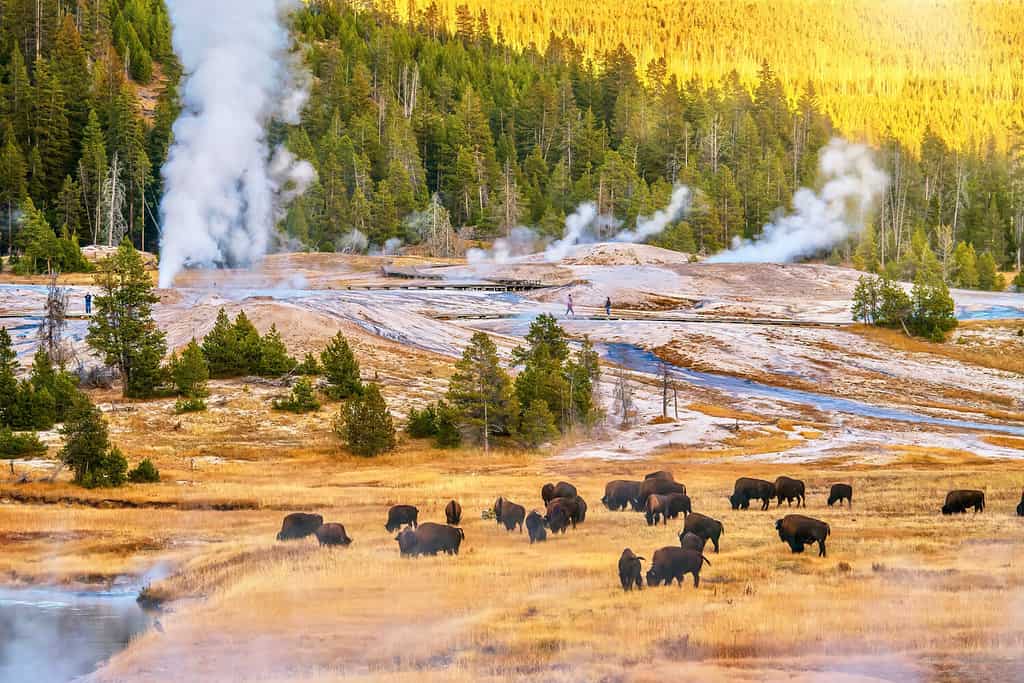
Yellowstone National Park was the first official national park in the United States.
©CherylRamalho/Shutterstock.com
The history of national parks in the United States is an interesting reflection of the country’s evolving understanding of nature and its conservation. The concept of preserving natural spaces for public enjoyment became clear with the establishment of Yellowstone National Park in 1872. Signed into law by President Ulysses S. Grant, Yellowstone became the world’s first national park, setting a precedent for the conservation of unique and iconic landscapes.
The establishment of national parks gained momentum with the Antiquities Act of 1906, which empowered the President to designate national monuments to protect significant cultural, historic, or natural landmarks. President Theodore Roosevelt used this authority extensively, declaring iconic sites like the Grand Canyon and Muir Woods as national monuments. The early 20th century saw a broader movement to safeguard public lands, culminating in the creation of the National Park Service (NPS) in 1916. Spearheaded by visionary figures like Stephen Mather, the NPS was tasked with managing and preserving national parks and monuments. This unified the diverse range of protected areas under a single agency. It also marked the beginning of a legacy dedicated to conserving the country’s natural wonders and providing spaces for recreation, education, and inspiration.
Accessibility in National Parks
The history of accessibility in American national parks has been a gradual but increasingly significant evolution. While the early years of the national park establishment primarily focused on preserving natural beauty, the consideration of accessibility for people with disabilities gained prominence in the latter half of the 20th century. The passage of the Architectural Barriers Act in 1968 marked a pivotal moment, requiring that federally funded buildings, including those in national parks, be accessible to individuals with disabilities. This legislation laid the foundation for more comprehensive accessibility efforts within the National Park Service.

Guide dogs, a type of assistance dog, help people with disabilities. Seeing-eye dogs lead blind and visually impaired people, helping them navigate situations or obstacles they normally would not be able to. Guide dogs are permitted in all United States National Parks.
©Africa Studio/Shutterstock.com
It wasn’t until the late 20th century that accessibility services and accommodations became a targeted objective of the NPS. In 1978, amendments to the Rehabilitation Act mandated that all federal agencies, including the NPS, ensure accessibility in their programs and facilities. The landmark Americans with Disabilities Act (ADA) of 1990 further strengthened these efforts. The ADA requires equal access to public spaces, including national parks. Subsequently, the NPS initiated a concerted effort to improve access. They did this by constructing accessible facilities, trails, and viewpoints, as well as providing educational resources tailored to visitors with disabilities. Today, the National Park Service continues to prioritize accessibility, striving to make nature available to everyone.
#1 Yosemite National Park

The Tuolumne River at Yosemite National Park is an incredible sight to behold.
©Robert Bohrer/Shutterstock.com
Yosemite National Park draws visitors from around the world with its towering granite cliffs, magnificent waterfalls, and ancient giant sequoias. While it’s famous for its rugged terrain and challenging hikes, it also offers a wealth of experiences that make it an ideal destination for seniors seeking both tranquility and adventure.
Yosemite’s appeal among seniors is evident through its popularity as a sought-after destination. Many older individuals are drawn to the park’s stunning vistas and serene landscapes. There, they can find peace in the beauty that surrounds them. The park’s diverse array of activities caters to different interests and activity levels. This ensures that seniors can enjoy everything from strolls along meandering paths to more challenging excursions for those who are up for it.
Getting to Yosemite National Park is relatively straightforward, thanks to its accessibility by car and other transportation options. The park can be reached via well-maintained roads, and shuttle services within the park facilitate travel between major attractions. While some areas of the park might present physical challenges due to the rugged terrain, there are accessible features designed to accommodate visitors with mobility limitations. Yosemite offers accessible trails, viewpoints, and facilities, ensuring that seniors can experience the park’s beauty without feeling excluded.
#2 Yellowstone National Park

The Grand Prismatic Spring is located in Yellowstone National Park.
©Marina Poushkina/Shutterstock.com
Yellowstone National Park is a great destination for grandma and grandpa. Not only is it a place of incredible beauty, but it is also accessible and easy to explore. Its panoramic scenes provide a peaceful escape from the hustle and bustle of daily life. The park’s popularity among seniors is seen in the increasing number of older visitors who find solace in its breathtaking landscapes. In fact, 75% of visitors during May, June, September, and October are 50 years old or over. The park’s diverse range of activities caters to varying mobility levels, making it an attractive option for seniors seeking both adventure and relaxation.
Accessibility is a key factor that makes Yellowstone an excellent destination for seniors. The park management has made significant efforts to ensure that individuals of all ages and abilities can enjoy its wonders. Accommodations include accessible exhibits and viewpoints, fishing platforms on Yellowstone Lake, lodging, and picnic areas. There are also designated accessible parking options available, 3 medical centers, and wheelchair loans and rentals. Service animals and motorized personal vehicles, such as motorized scooters and wheelchairs, are permitted in the park. Also, most walkways and self-guiding trails have at least one accessible route.
While reaching Yellowstone may require some travel planning, the effort is well worth it. The park is serviced by major airports and well-maintained roads, making it relatively accessible by air or car. Once inside the park, the network of roads, viewpoints, and accessible trails ensures that seniors can explore without significant physical challenges.
#3 Grand Canyon National Park

The Grand Canyon is a natural marvel that every generation can enjoy.
©ipanacea/iStock via Getty Images
Grand Canyon National Park, a marvel carved by the Colorado River over millions of years, presents an enticing destination for seniors seeking awe-inspiring natural beauty and accessible exploration. With its vastness and dramatic landscapes, the Grand Canyon’s appeal among seniors is undeniable. Its contemplative grandeur offers a serene escape, drawing older visitors to its splendor.
Popular among seniors and travelers of all ages, the Grand Canyon offers a unique blend of relaxation and adventure. Its accessibility features cater to diverse mobility levels, making it an ideal choice for seniors looking to experience the park’s beautiful features. Paved walkways and viewpoints along the South Rim offer easy access to captivating panoramas. Additionally, shuttle services enhance mobility within the park. For those seeking a more immersive experience, helicopter and mule rides provide novel perspectives of the canyon’s majesty.
Reaching the Grand Canyon is convenient for in-state and out-of-state travelers. Well-maintained roads and nearby airports facilitate travel. The park’s commitment to accessibility ensures that seniors can enjoy this natural beauty without undue physical strain. From awe-inspiring sunrises over the canyon’s rim to leisurely walks along accessible trails, the Grand Canyon National Park offers seniors an unforgettable encounter with one of Mother Earth’s most breathtaking spectacles.
#4 Acadia National Park
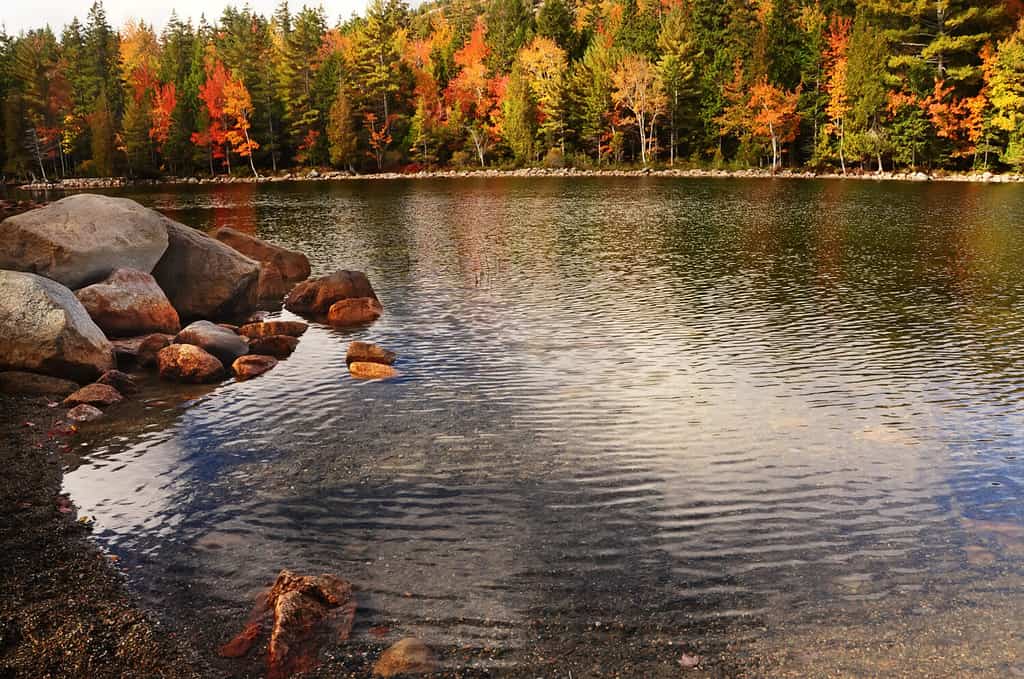
The elderly can enjoy a peaceful afternoon in Acadia National Park, especially in autumn.
©Ann Stryzhekin/Shutterstock.com
Acadia National Park, sitting along the rugged coastline of Maine, offers seniors an amazing destination that seamlessly blends natural beauty with accessibility. Known for its stunning landscapes, rocky shores, and lush forests, Acadia is popular among seniors seeking both relaxation and exploration. The park’s tranquil views and the therapeutic effect of ocean breezes make it a haven for older visitors looking for a rejuvenating escape.
Among seniors, Acadia National Park has gained recognition for its charm and accessible offerings. The park’s accessibility efforts are evident in its well-maintained roads, paved trails, and accessible facilities. Seniors can enjoy strolls on easily navigable paths, such as the scenic Ocean Path or the Jordan Pond Path. Both routes offer outstanding views without requiring strenuous hikes.
Reaching Acadia is straightforward, with options for driving or taking public transportation. The park’s proximity to towns like Bar Harbor makes it convenient for seniors to find comfortable accommodations and amenities nearby. From gazing at sunrise atop Cadillac Mountain to exploring the park’s picturesque coastline, Acadia National Park provides a magnificent balance of accessible experiences and fascinating natural wonders for seniors to savor.
Which National Park is Best to Visit First?

The Grand Canyon National Park might be the best national park to visit first!
©Amanda Mohler/Shutterstock.com
If there is one thing that the United States has over many other countries in the world is its selection and variety of national parks! With that being said, it may seem daunting to try to find out which one you should visit, especially if you haven’t been to one yet. Well, we have a great selection for you, but it might not come as a huge surprise!
Why not just jump right in and go to one park that probably stands out the most from all of the others? If you have not guessed it yet, you might want to check your bucket list because it is none other than the Grand Canyon National Park! It is such a majestic local that people travel literally from all over the globe to see this national treasure. On top of all that, because this national park has so many visitors from so many places and with so many different needs, they are extremely prepared to help you and your family with your first national park visit!
Summary of the Best 4 National Parks for Seniors to Visit
| Number | National Park | Reasons |
|---|---|---|
| 1 | Yosemite National Park | Diverse array of activities |
| 2 | Yellowstone National Park | Breathtaking landscapes |
| 3 | Grand Canyon National Park | Accessibility features |
| 4 | Acadia National Park | Relaxation and exploration |
The photo featured at the top of this post is © sumikophoto/Shutterstock.com
Thank you for reading! Have some feedback for us? Contact the AZ Animals editorial team.



